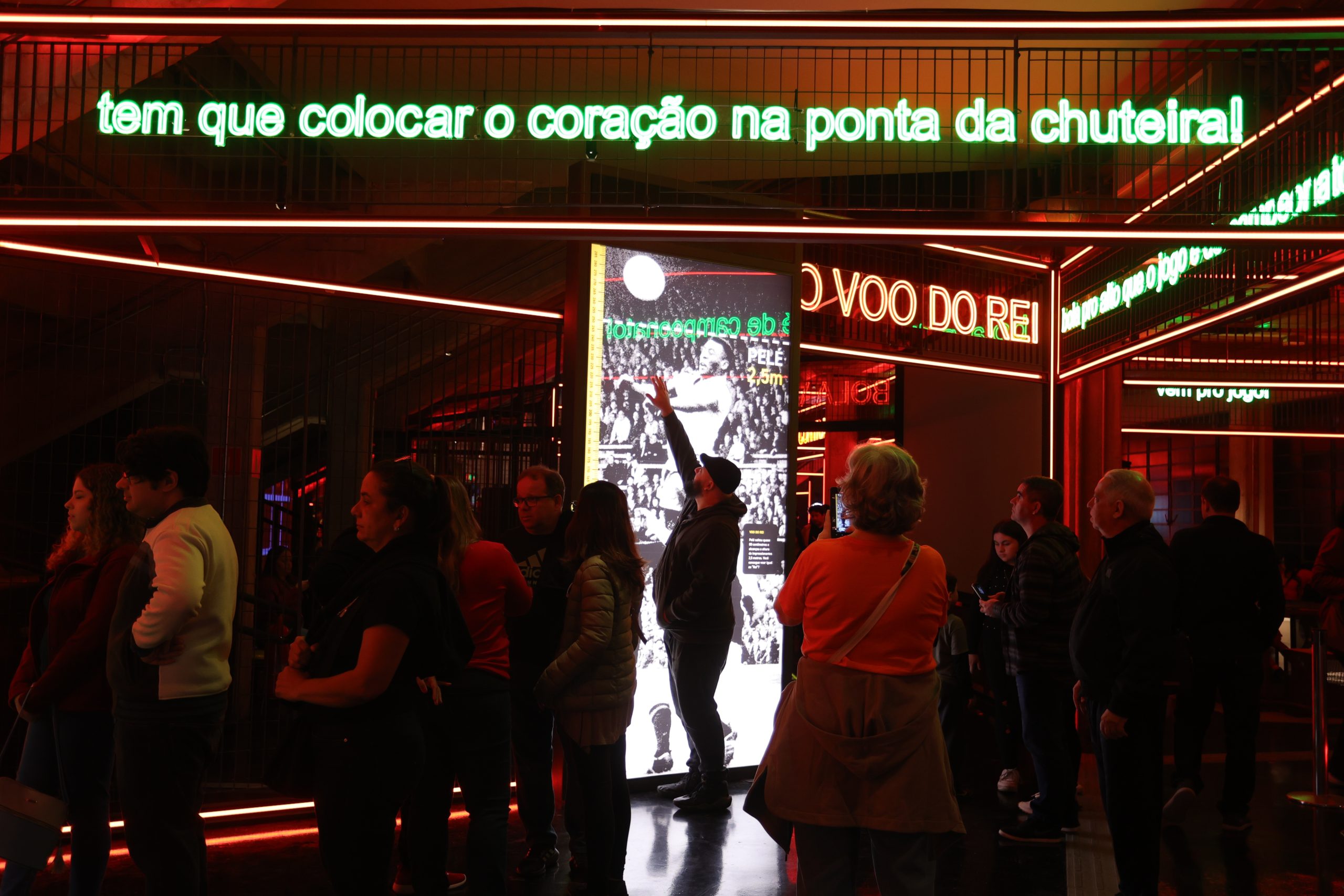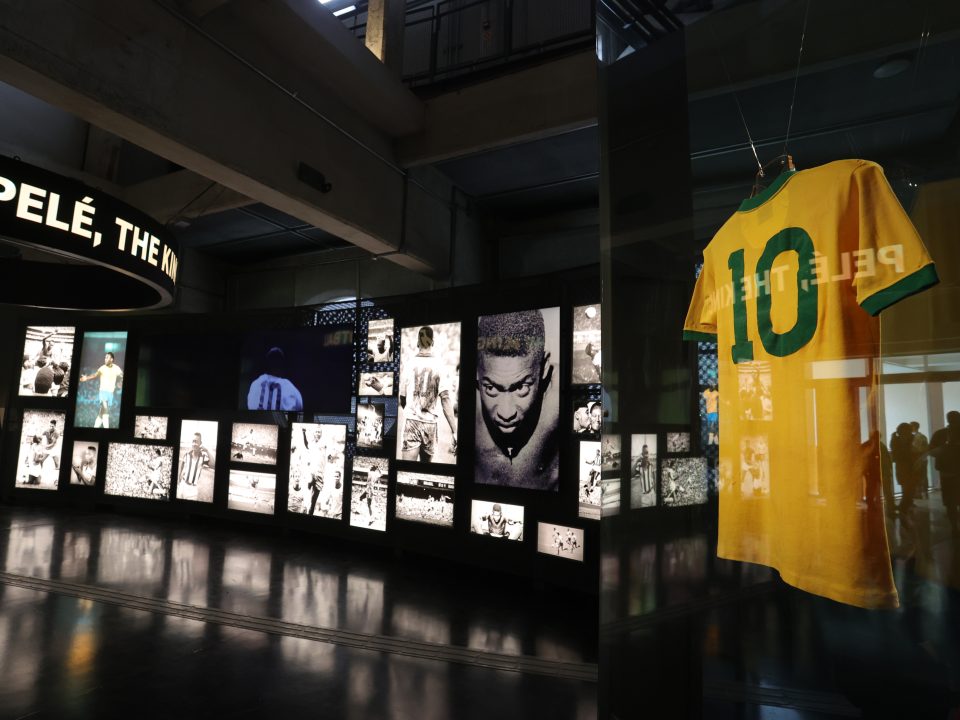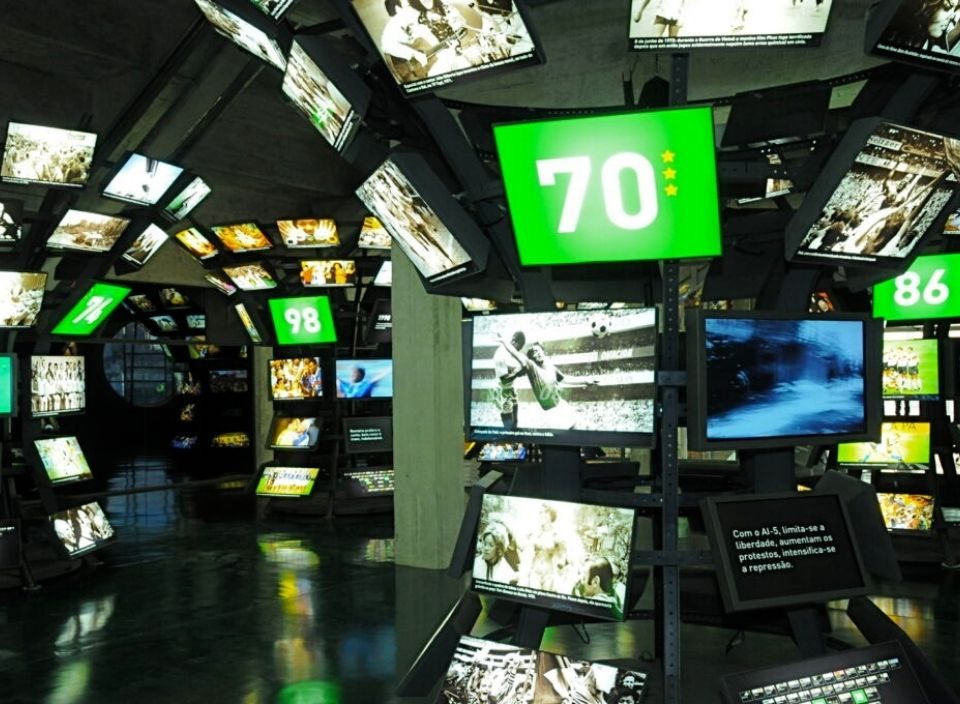LONG TERM EXHIBITION
New Football Museum
A living history that presents football as an inseparable part of Brazilian cultural identity – this is the focus of the Football Museum’s main exhibition. Renovated in 2024 to be more diverse, inclusive and even more fun, the museum dedicated to the fascination with the sport has acquired new content and halls, more accessibility features, rare and curious items, videos, photos and new attractions.
Date
Since July 12th, 2024
Opening Hours
Tuesday to Sunday
9 am to 6 pm (entry permitted until 5 pm)
Every first Tuesday of the month, until 9 pm (entry allowed until 8 pm)
Tickets
R$ 24,00 Full
R$ 12,00 Students
Free for children under 7
Free for all on Tuesdays
Collect directly from the ticket office or through Sympla.
See other free offers.
How to get there
Click here and access different transportation options
New experiences
Among the novelties of the new main exhibition is the Football Dance hall, which allows visitors to choose videos documenting memorable plays. Historic goals, unforgettable celebrations, saves and dribbles that baffle the opponent are all part of the menu, which visitors can activate as if they were in a TV control room.
The incredible plays come from different Brazilian states, from both the men’s and women’s championships. The images were selected by Globo from its collection.
The Roots of Brazil is another novelty. More than 100 photographs and a film produced by filmmaker Carlos Nader can be seen in the space, which has a multimedia screen made up of 17 monitors. It’s a great historical dive into the time when Brazil elevated football to a significant cultural value.
The hall shows the celebration of the Brazilian people between the 1930s and 1950s, when Brazil reflected on itself, and new values of national culture emerged – in painting, literature, music, theater and other important artistic expressions. The new space provides an experience that highlights how football crosses the boundaries of sport to become a cultural phenomenon.
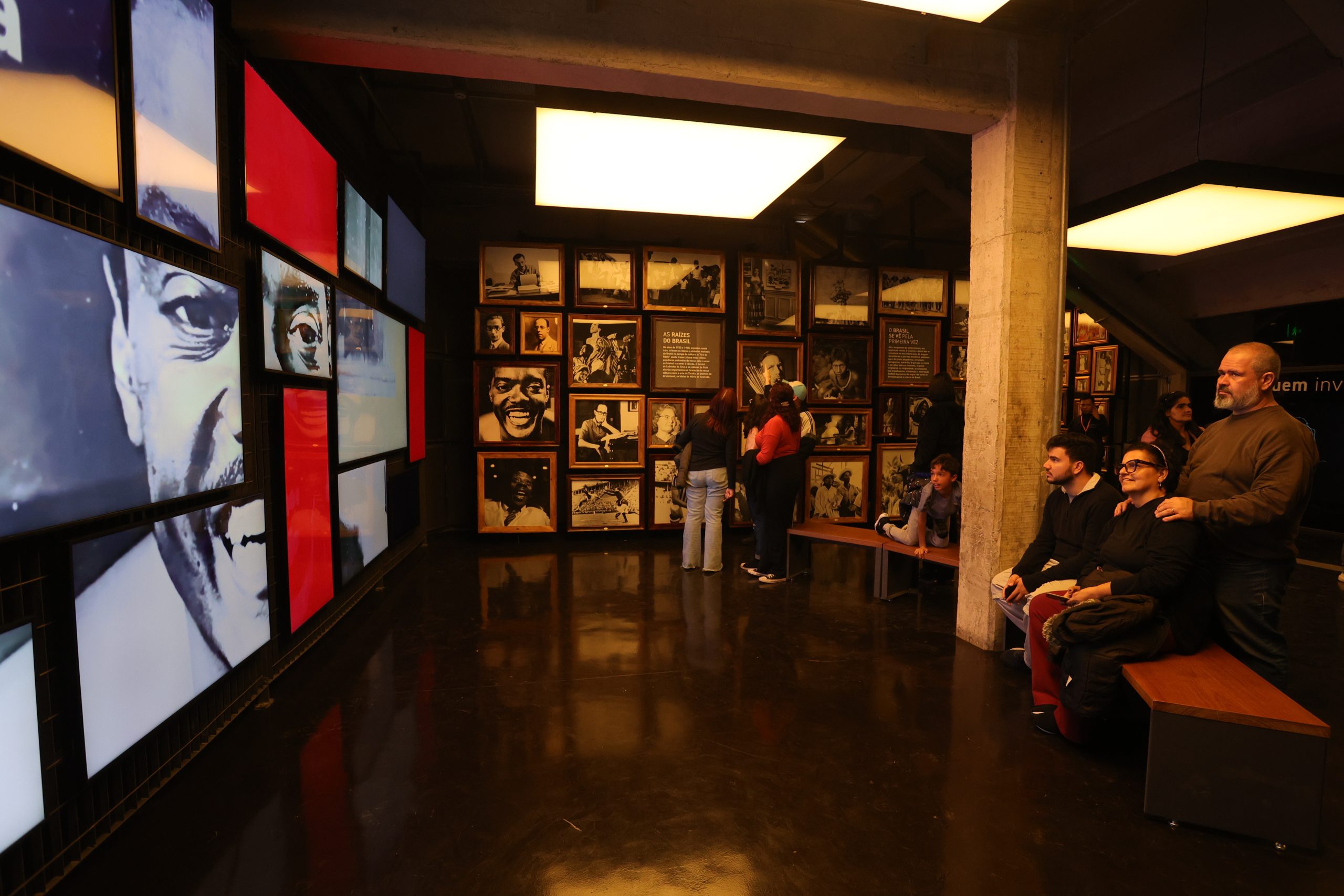
Women's Football
The hall of Origins, which tells the story of the sport from the 19th century to the 1930s, is one of the redesigned spaces that now places more emphasis on women’s football. One of the biggest moments in this history was the decree signed by Getúlio Vargas in 1941, which banned women from practicing the sport. In the updated course, there is more unpublished content collected and donated by players, coaches and sports journalists.
Rare images showing Brazilian women playing football from the 1920s onwards have been included – for the time being, the oldest known records.
In the Cups hall, women’s football is featured in four modules – Defense, Dribbling, Counter-Attack and Goal – which exalt women’s history and resistance between 1941 and 1988 – the period from the banning of the sport until the First Experimental Tournament in China in 1988, which preceded the official creation of the FIFA Women’s World Cup. In addition, all the Women’s Cups since 1991 have been included in the Hall, along with the Men’s Cups.
Another novelty is a video starring Marta. Projected onto a life-size screen, the Queen of Football bids farewell to the public at the end of the tour. In Portuguese, Spanish and English, the striker invites everyone to return and then thanks them in Brazilian Sign Language (Libras). The experience mirrors the welcome video with Pelé at the entrance to the museum since its inauguration in 2008.
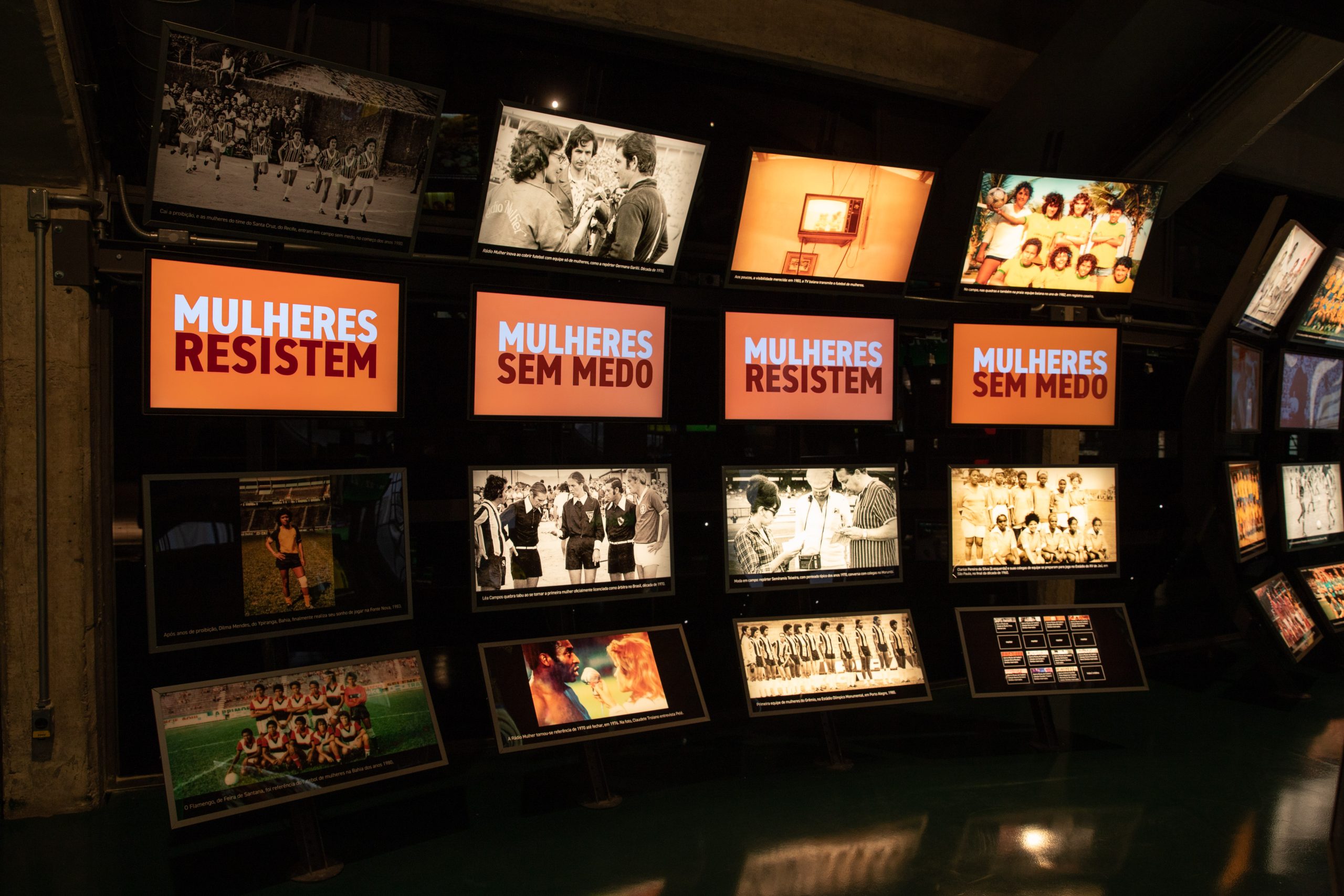
Exaltation hall
In the transition from the first to the second floor of the Football Museum, visitors have the unique opportunity to see the bowels of a football stadium. The Exaltation Hall was created by opening up a previously nonexistent passage that leads to a kind of cave formed by the pillars supporting the grandstand and the hill on which the sides of the Pacaembu stadium are built. It’s between the pillars that images of Brazilian club fans are projected, with the loud sound of their war cries: it’s as if the visitor has been transported to the middle of a football match. One of the public’s most beloved experiences has been retained in the renovation project.
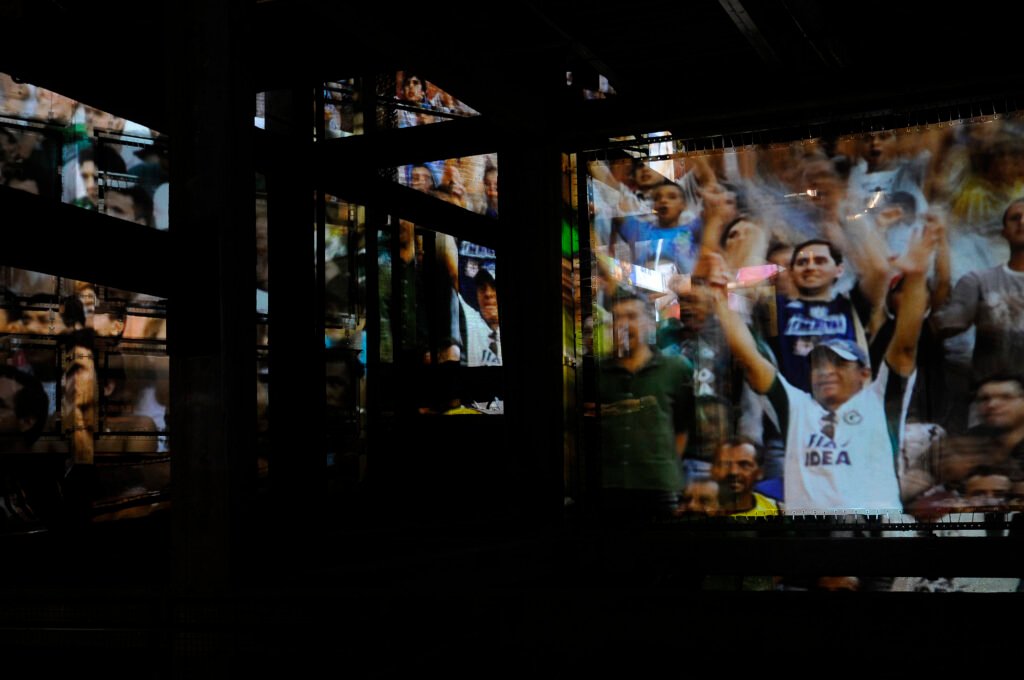
The Pelé that lives in us
As well as welcoming the public at the start of the exhibition, the King of Football was given a space especially dedicated to him.
The new Pelé hall promises to thrill those who saw him play and surprise those who did not have the opportunity. Considered the athlete of the 20th century by the International Olympic Committee, his career is told with captivating images of the player.
The curators also explore the King’s relationship with other players on the field. The jersey worn by Pelé in the 1970 World Cup final against Italy is joined by another rare example – the uniform worn by the player in a match in honor of England’s Queen Elizabeth II for the São Paulo football team*.
*The jerseys are periodically removed from the display case for conservation. On these occasions, they are replaced by other uniforms related to the collection.
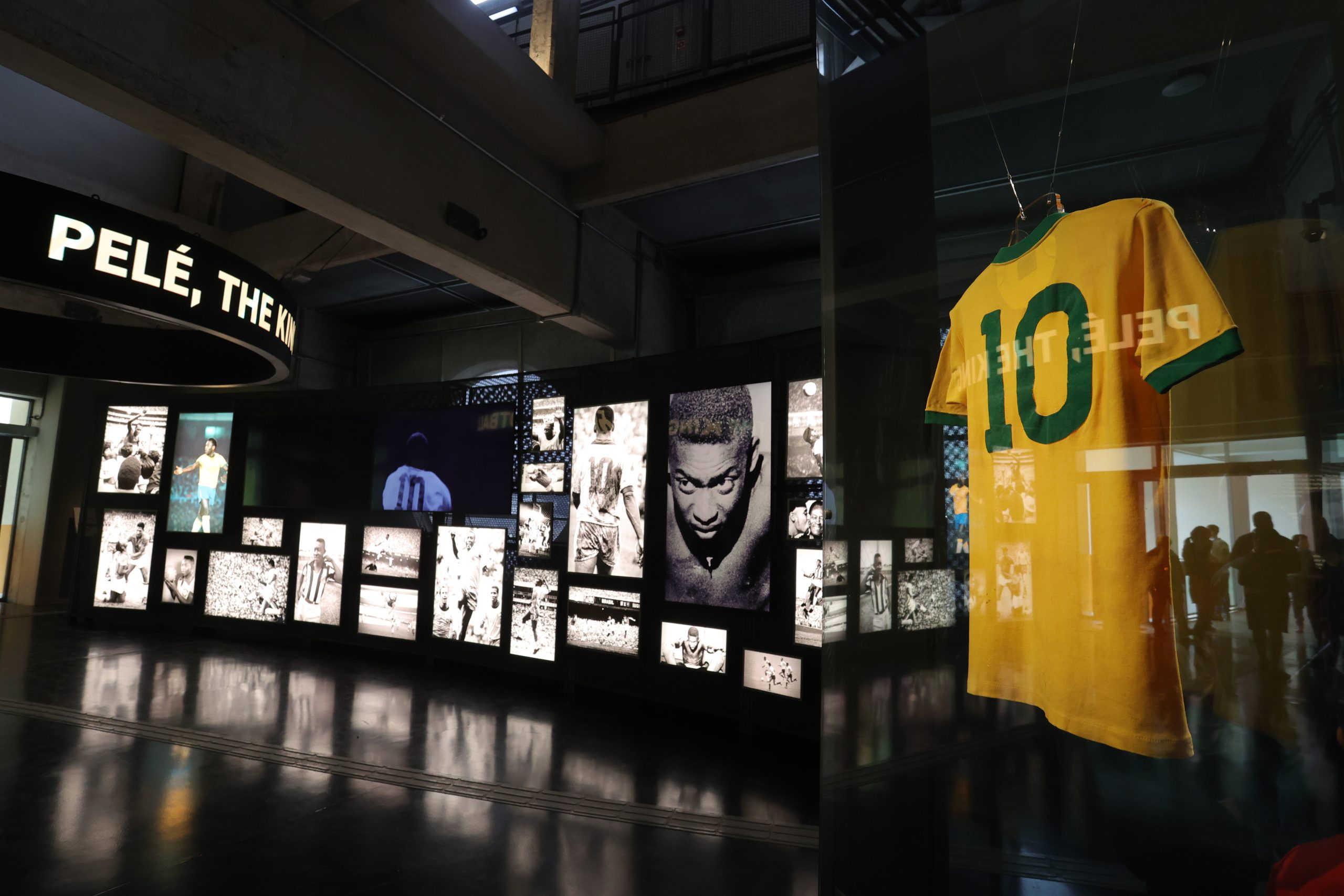
Almanac of the Ball
The Almanac of the Ball replaces the old Numbers and Curiosities hall, now with new technologies and interaction, such as challenges and quizzes on topics related to contemporary issues in sport, such as the visibility of sports adapted for people with disabilities and the problem of racism. Visually appealing information in plain language is offered with accessibility features. Another new feature is that the Almanac’s illustrations now depict men and women of different skin complexions, reflecting Brazil’s diversity.
One of the most important stages in national football, the Paulo Machado de Carvalho Municipal Stadium, Pacaembu, could not be forgotten in the Museum’s renovation process. Inside the Ball Almanac there is a special niche about the stadium, telling its story from the first designs in the 1930s to its intense use as a stage for sporting events and major musical, religious and political events.
The hall has a special nine-minute video about the stadium, in addition to tactile mock-ups and seats taken from Pacaembu.
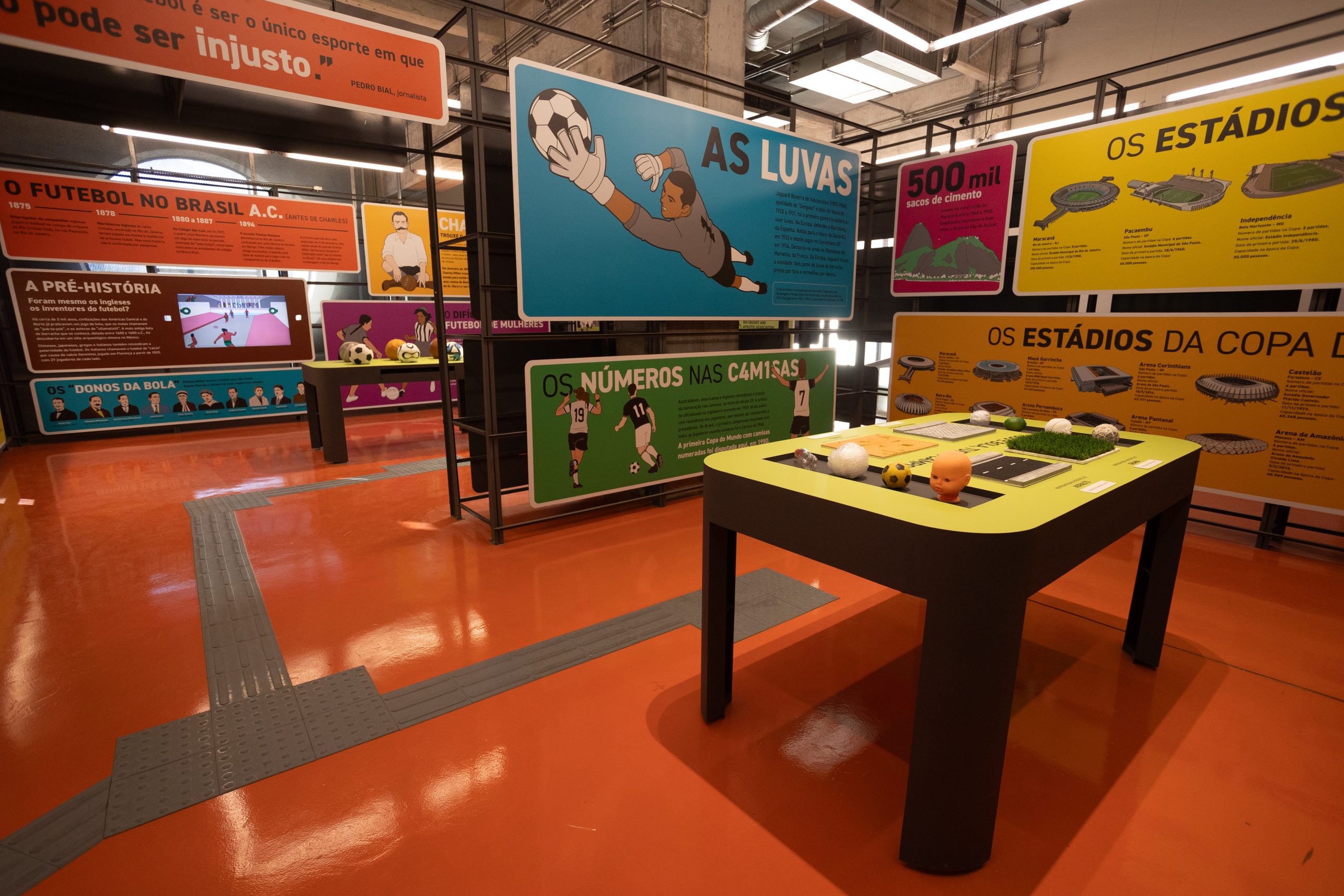
New experiences
Visitors to the Football Museum will find interactive and gamified possibilities in the new Body Game hall. Through body movements, the activities explore elements of a football match such as passing, precision and speed. Located at the end of the tour, it is a space for fun and interaction.
